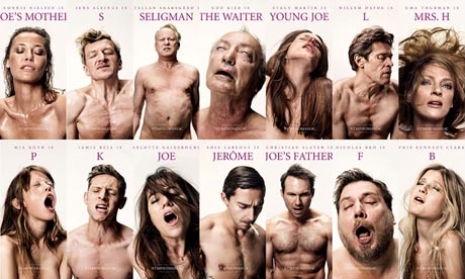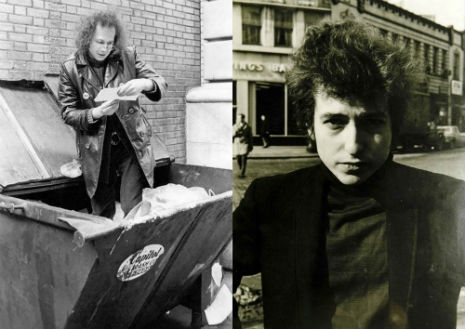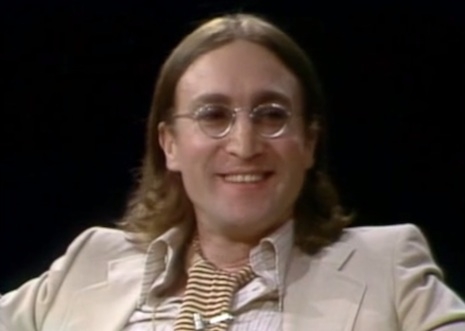
Photo by Christine Navin
Lillie Jayne aka Admiral Grey is a composer, writer, actress, performance artist and the mesmerizing lead singer for Weasel Walter’s New York City-based Cellular Chaos.
The details are a little sketchy. A petite blond in a flimsy sundress has lost her shoes as she wraps herself around a Boojum tree as a cyclone devastates Baja, California. The truck she was traveling in to escape the storm had been swept up in a flash flood and sent careening through the rapids. Quick thinking propelled her through the open window. After four hours of pounding rain and thrashing winds, she releases her grip from the fragile branches and begins the long journey back to town. Battered and bruised, the white tornado known as Admiral Grey has just stared down a tropical hurricane and somehow weathered the storm undaunted.
Lydia Lunch: At what age did you realize you were born to perform? And what was your first performance?
Admiral Grey: My first performance was in kindergarten at Catholic school. A boy and I got picked out to be Leo and Leona the lion in the school nativity musical. I had one phrase to sing that finished with an extended-note ‘ROAR.’ I took my performance very seriously, and there was a great crowd reaction. I was proud, but a little taken aback and embarrassed by all the fuss everyone made – all I did was go out and do what I was supposed to do and do it well.
My first rock performance was at 14 singing Janis Joplin songs with a band at a talent show at school, at full force, fully inebriated and in full Pearl-era regalia - oh good god people didn’t know what to make of that. I’m glad I wasn’t beat up. Although it probably would have been great to get in a fight that night.
Lydia Lunch: What books or music inspired your young psyche and pushed you forward toward recognizing your calling as a performer?
Admiral Grey: At first, T. S. Eliot, a book of Hemingway’s lost half-written poems, searching - I was a bit obsessed with Rimbaud, young, with laser-sharp eyes wide open and a filthy romantic heart.. And of course I thought I was him reincarnated because we had the same birthday. Dylan Thomas, Walt Whitman, the confessional poets…Speaking of confession, growing up Catholic, with all of its inherent pomp and ceremony, hugely formed me - my sense of performance, my sense of reverence and need for ritual. My sense of opulence - the Catholic church is so opulent and pagan, and so am I.
Henry Miller was another filthy romantic philosopher, and he too thought he was Rimbaud.The art, writings and sad story of Zelda Fitzgerald because of her frustrated and suppressed genius and ultimate disaster – as girls grow up it’s easy to get lost and pushed away from one’s talents and passions especially if your interests lie in a wide range of arenas and you don’t know how to live and act like everyone else. Marguerite Duras, as an intellectual and brilliant writer and uncompromising person. Obsessive workman-like writers like Fitzgerald and Hemingway, DH Lawrence – Nietzsche. And Genet, Artaud, Camus… E.M. Cioran, Joan Didion, Tennessee Williams, Truman Capote, Salman Rushdie, Toni Morrison, Kurt Vonnegut, Charles Bukowski. Then there’s all of the current writers, too - right now, George Saunders is just destroying me. I went through a childhood phase of historical western and war books, and I continue to love history and non-fiction. It’s important to keep in touch with the scope of humanity.
Musically, discovering Frank Zappa was huge. I lived in a culturally isolated area with relatively strict parents. Of course hip-hop and R&B were huge growing up in the New York area. And renegades like Nina Simone and Jacques Brel. Joni Mitchell’s stubbornness as an artist as her work and career developed and got more esoteric and also as a woman, consistently staying single and taking on new lovers with each artistic phase and being open about it, was very bold and inspiring to someone like me who couldn’t picture having children. The Janis Joplin in Concert LP influenced me deeply, especially about pushing boundaries in performance and music.
Lydia Lunch: What historical figures do you most relate to?
Admiral Grey: Queen Elizabeth the first, which also happens to be my Christian name. She was hyper-intellectual, spoke several languages, read several books a day and translated texts for fun, found time for creative and sporting pursuits, led powerful armies through battle and England through arguably the most intellectually, financially and artistically prosperous time as the most powerful country in the world, refused to marry, and never got assassinated even though that was a daily threat and intent of many for her entire life. And she did this all 450 years ago. Cleopatra before her was very similar and I am in awe of these people.
Lydia Lunch: What´s the zone like that you get into on stage? Are you conscious of what´s going on in the audience? Do you disappear into a hypnotic time warp where the music teleports you into the nightmare scenarios that your words paint?
Admiral Grey: Yes, and no. Since I’ve performed my whole life I almost always hover on the precipice of that fugue-state, although occasionally I slip straight in…I need to consistently check in with the audience, to give and receive from them, as it is truly something we are all doing together… it’s almost like hunter-survivor mode, with heightened senses and strengths and capabilities and very quick reaction times. Plus a bit of ancient storytelling, and gospel hour. Sometimes I black out momentarily.
Lydia Lunch: What´s the difference between staging a piece for theater and playing live rock music?
Admiral Grey: Theater, to me, is choreography. It’s perfecting each moment and rehearsing it and rehearsing it until it bores you to tears – and then in performance, finding a way within that choreography to trick your brain into feeling and believing that all of that is happening for real, for the first time, and letting it be spontaneous, while another part of your brain makes sure that you hit all of the marks. That’s exactly what I like my bands to be like, though I don’t think it has to be that way. To rehearse so that the material is ingrained, so that one part of your brain can help you hit the marks while in performance you can free yourself to dance on the edge of mayhem and disaster throughout the performance. The trained unconscious part of your brain secretly holds your hand through the performance while the front of your brain thinks it’s going apeshit.
Lydia Lunch: Are there any classic plays you would like to stage?
Admiral Grey: I’d love to stage a Genet play.
Lydia Lunch: How do you blow off steam when you´re not on stage?
Admiral Grey: Performance is definitely my idea of blowing off steam, but when I am not working obsessively on my myriad projects…I love making things with my hands. My room is a bit of a tree house in a loft and it has grown into a sort of installation. And I like to cook and eat and drink and spend intimate, real time with people I love, of course. And I need a certain amount of extreme physical activity, so if I’m not performing I need to find ways to do that, in whatever regimented or bonkers ways I can without dying or getting pregnant. And I also need to run away and be alone, very alone.
Lydia Lunch: What´s it like working with Weasel Walter?
Admiral Grey: Oh, man. Well, let’s just say I feel very lucky to have him in my life. We enjoy the same things, we like to work in the same way, we enjoy music in a lot of the same ways, we enjoy making music together and performing with each other and touring together, and we have a deep mutual love and respect and trust that everyone should be lucky enough to have with a collaborator. Just a total blessing that we ended up working together. I feel lucky obviously as well to have him as a friend because he is solid as hell. And we laugh, at each other and with each other, all of the time, which is of the utmost importance.
Lydia Lunch: Any aspirations, premonitions or prophesies for 2014?
Admiral Grey: This year my biggest project is composing the music for and performing in a theater piece that I’m collaborating on with The Nerve Tank, a great experimental theater group in New York. It’s called “The Maiden” and is based on the myth of Persephone. It has already been very inspiring developing it. I want Cellular Chaos to release a new album and I want to finally release an album and videos of my solo work. I want to get the funding and team for a very ambitious absurd three act musical play that I have written and that has been sitting on the backburner for too long now. I want to not die, which is a great feeling to have. I want everyone I love to be happy and healthy. And I’d like to collaborate with you.
The new full-length Cellular Chaos LP out now on ugEXPLODE.
Cellular Chaos on Facebook. Lydia Lunch’s website.
Below, an entire Cellular Chaos set taped at Death By Audio, Brooklyn on July 13 2013. Cellular Chaos are Admiral Grey: vocals, lyrics; Weasel Walter: guitar abuse; Kelly Moran: bass; Marc Edwards: sci-fi drums



























